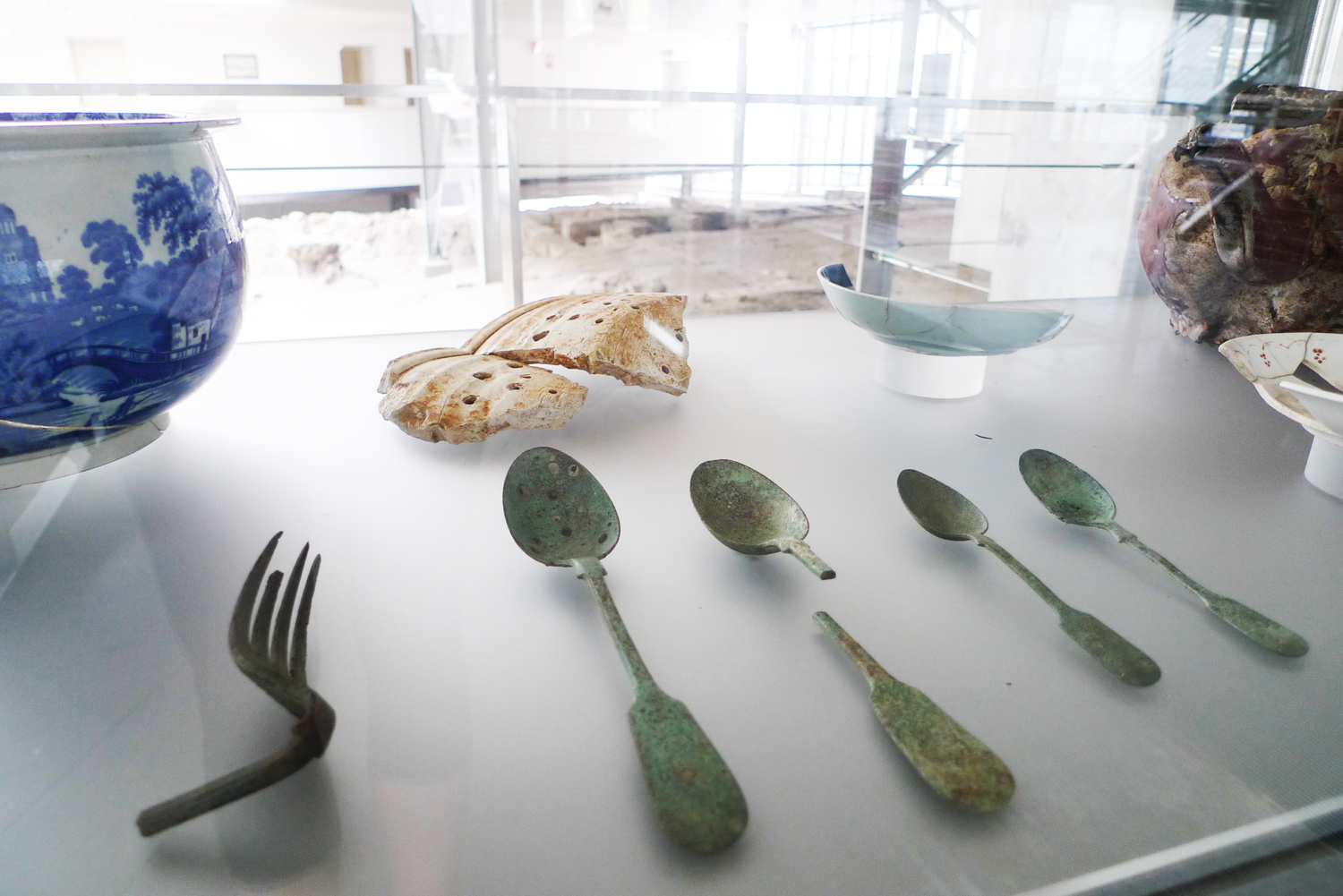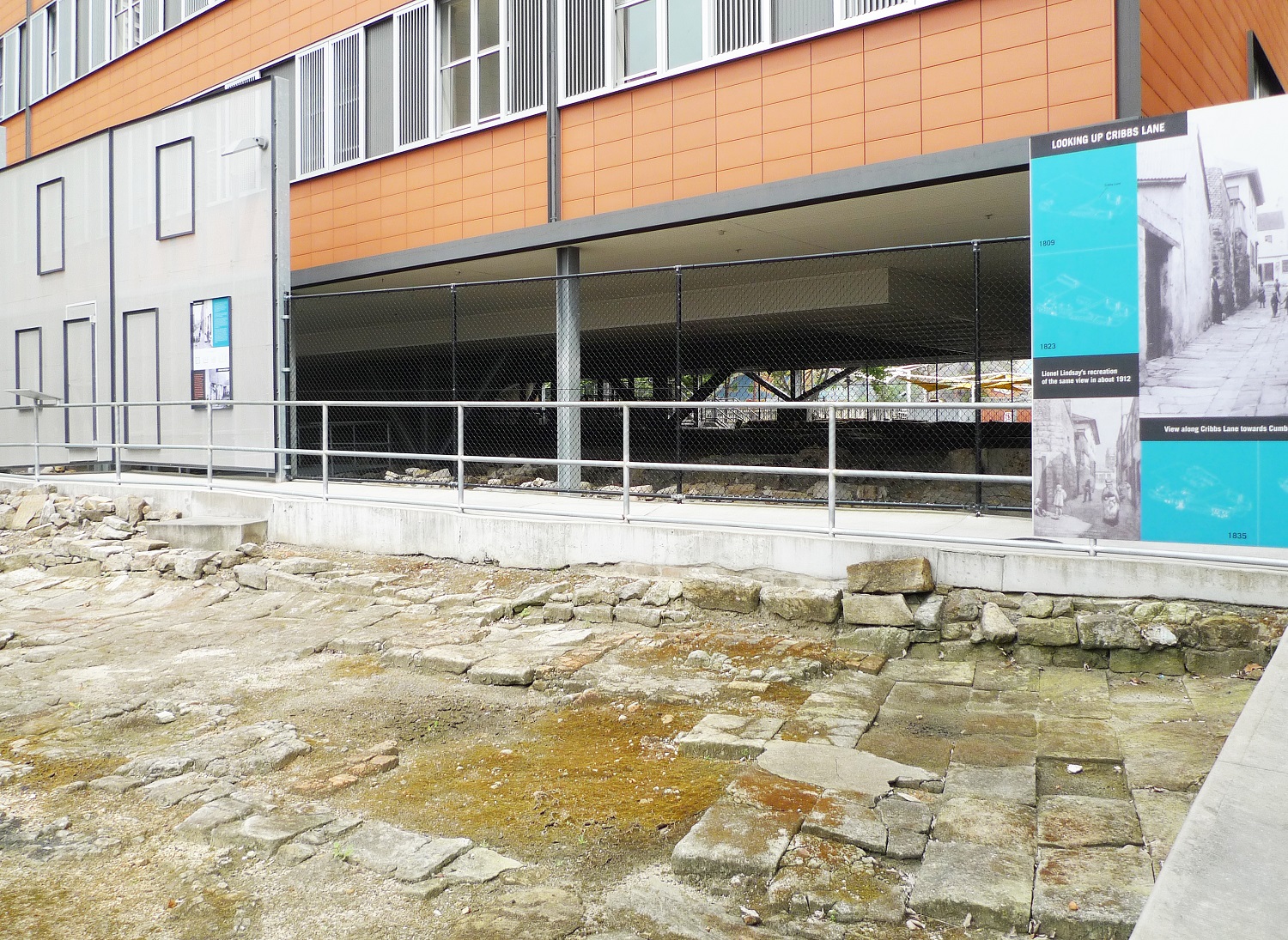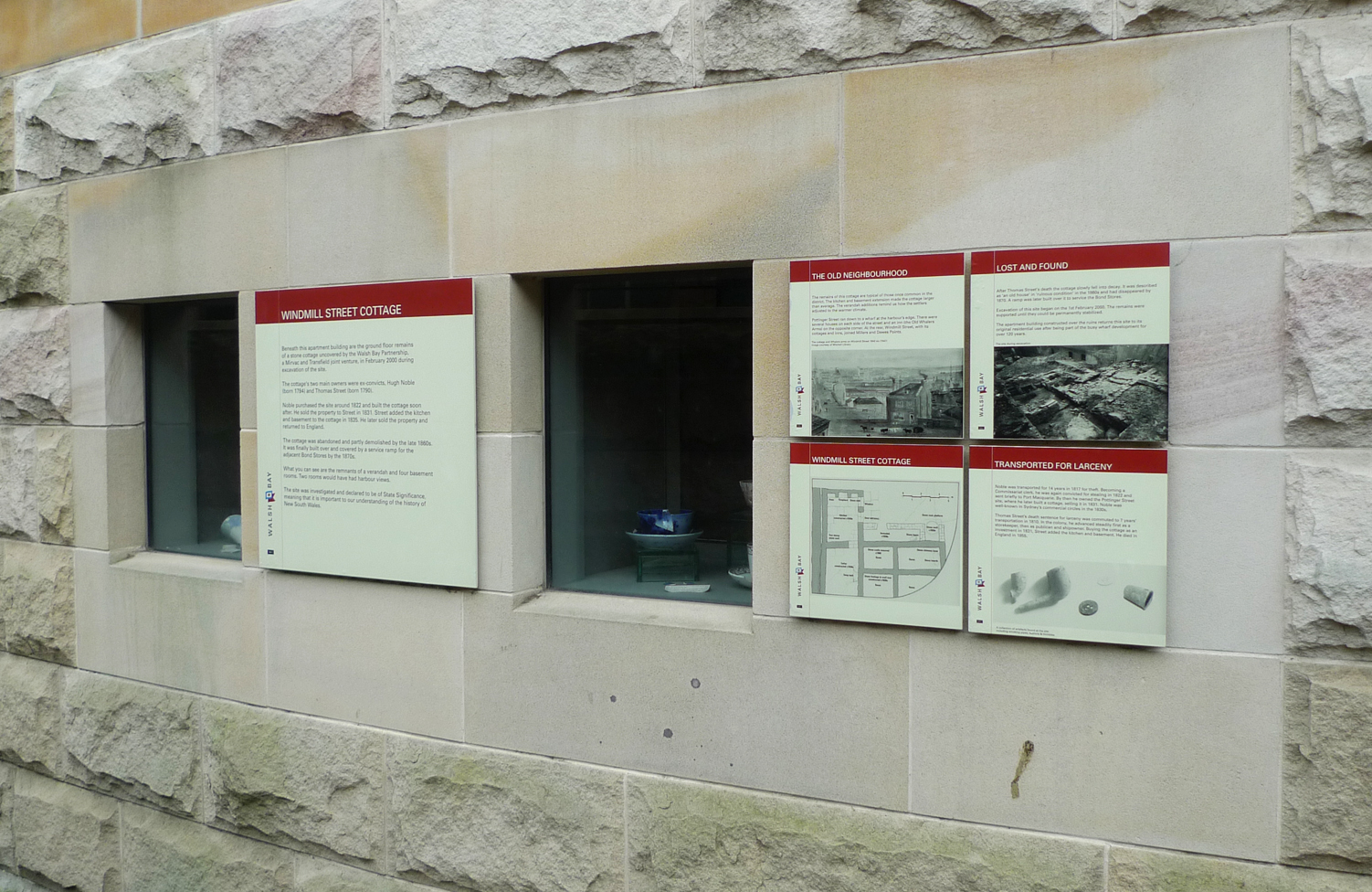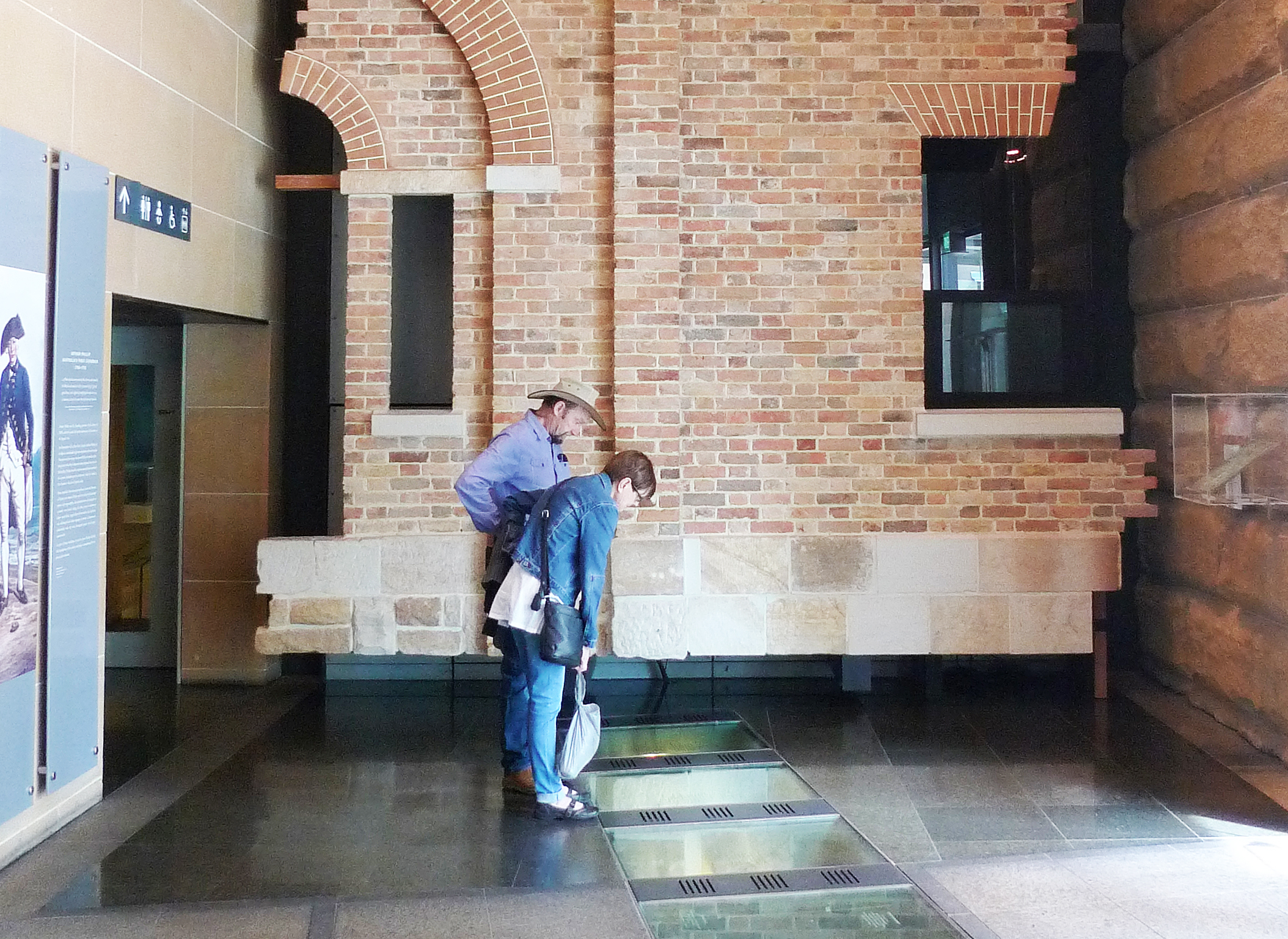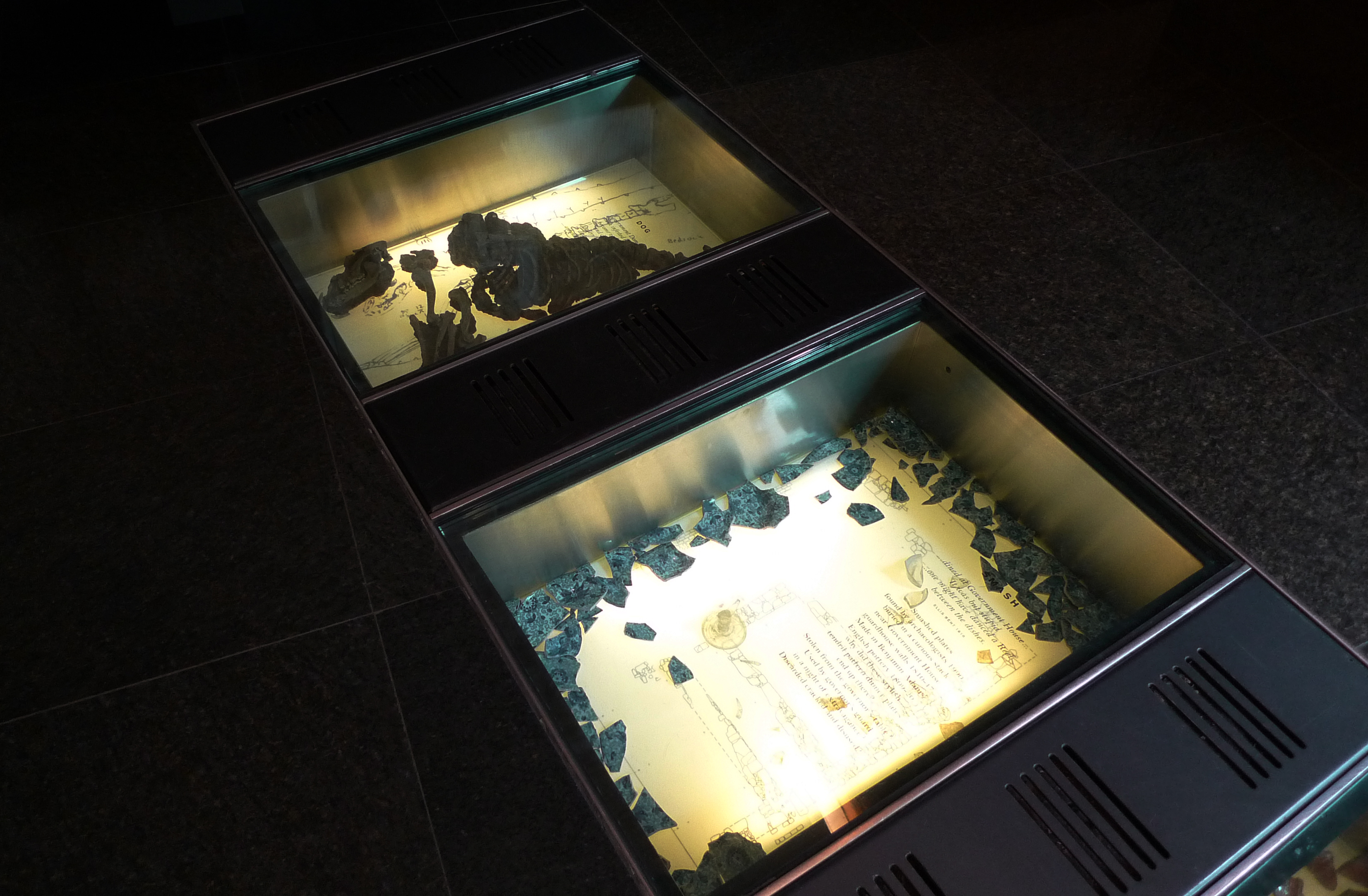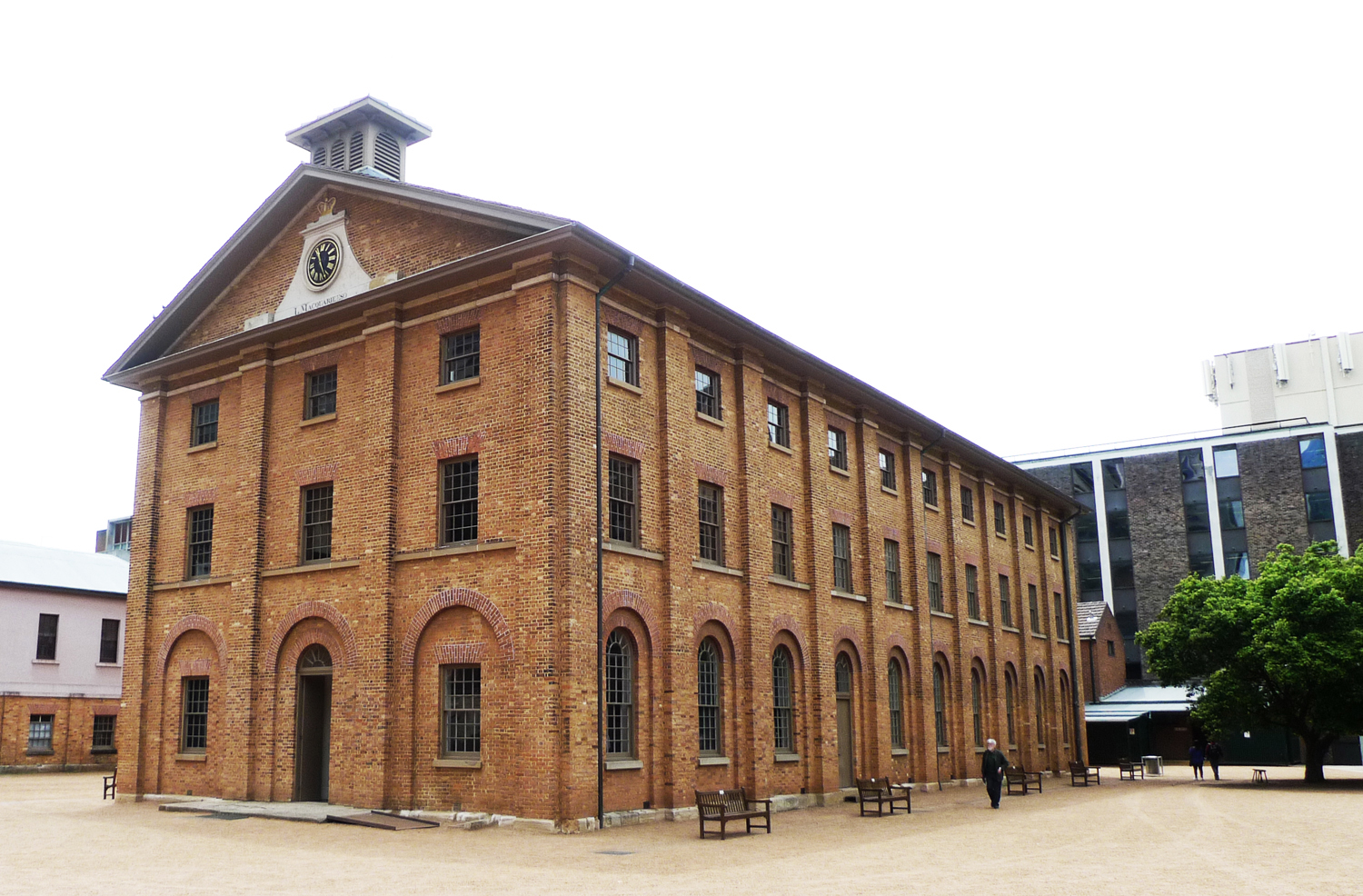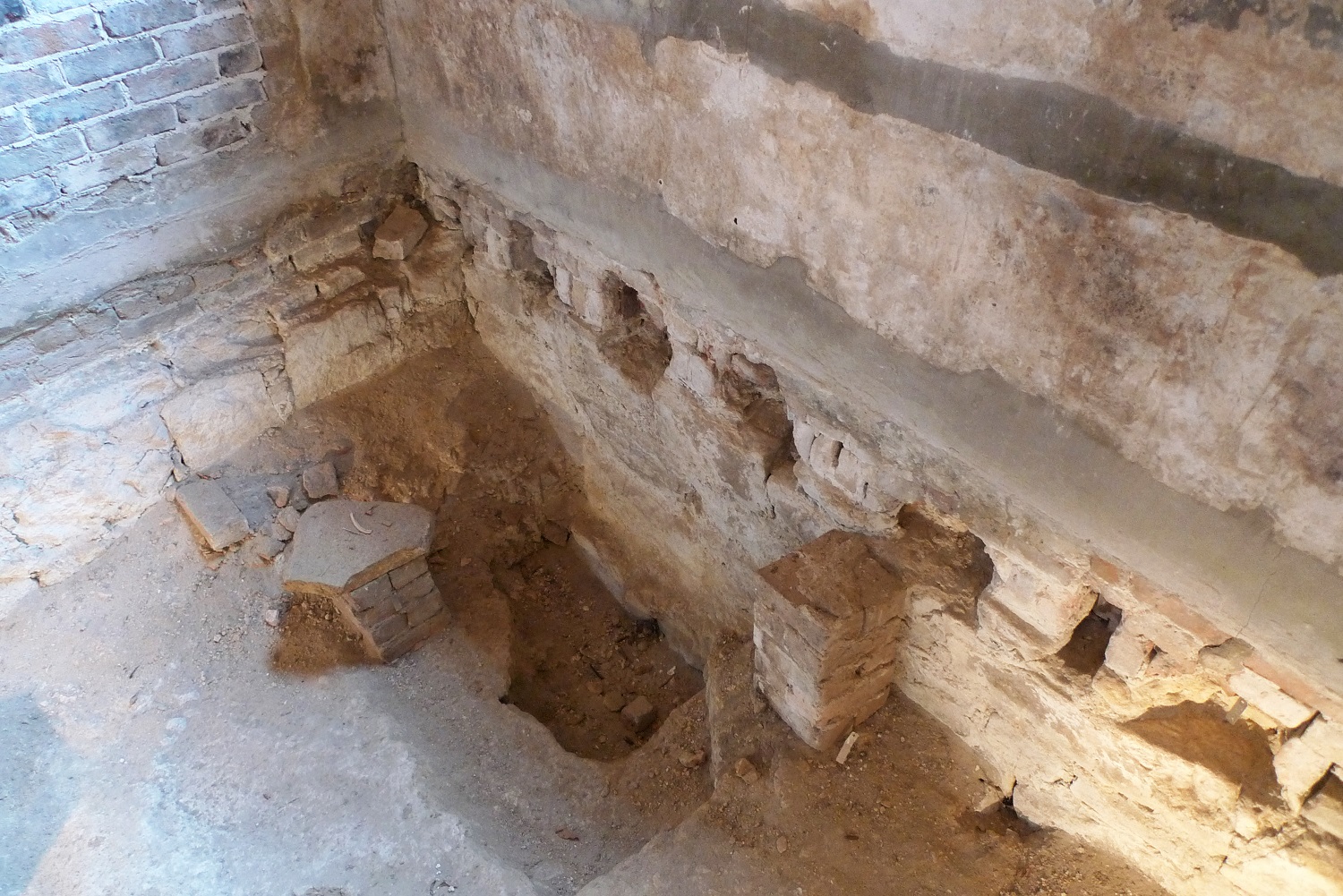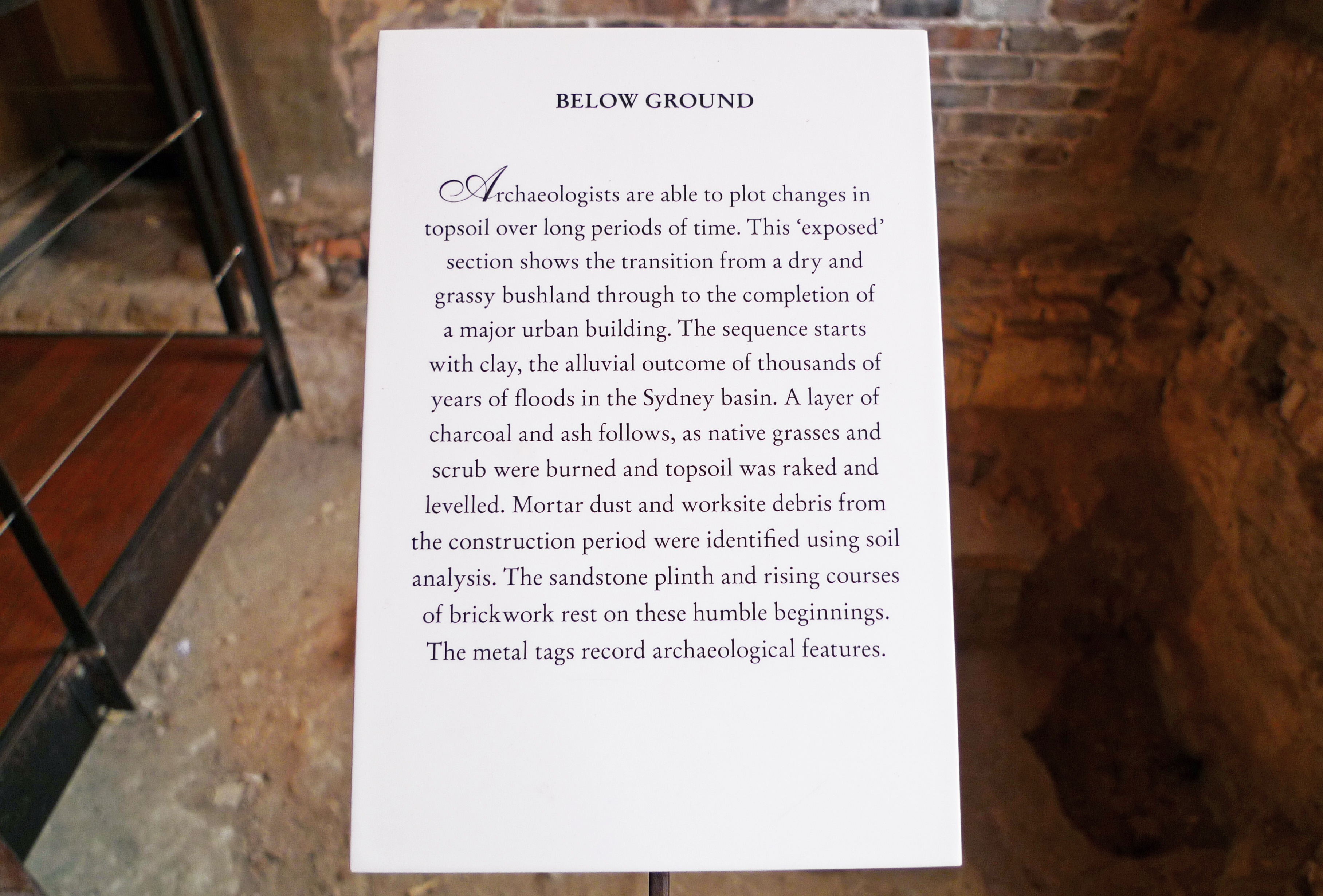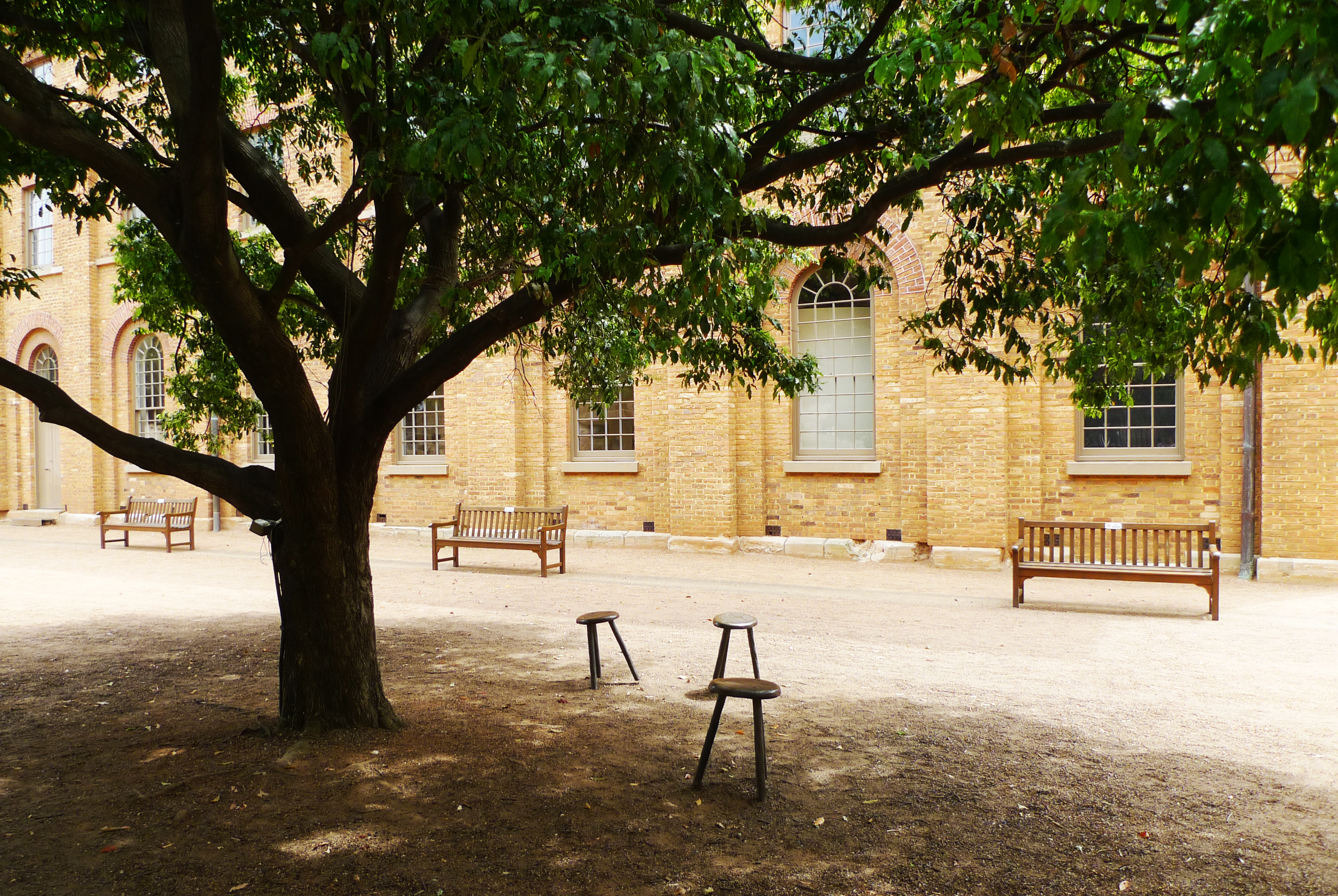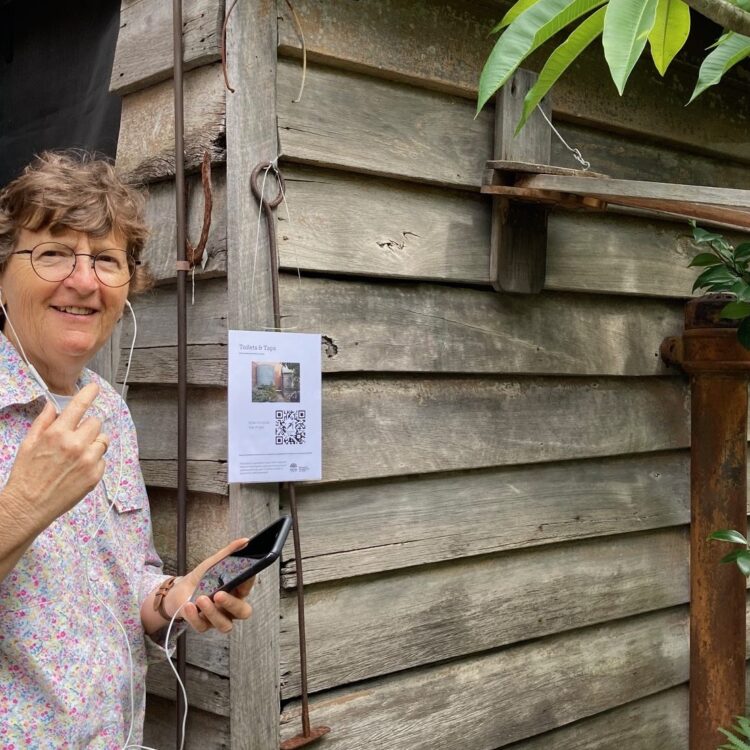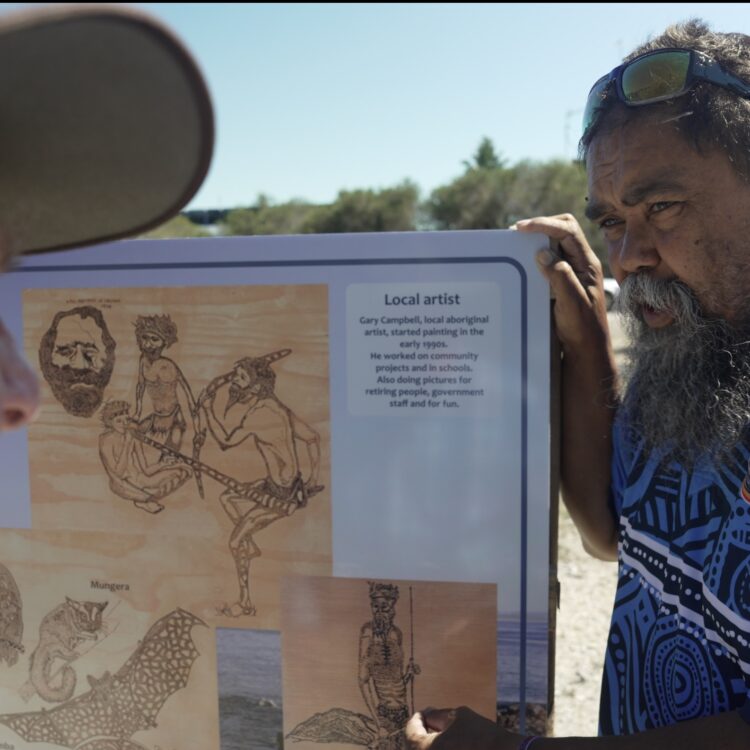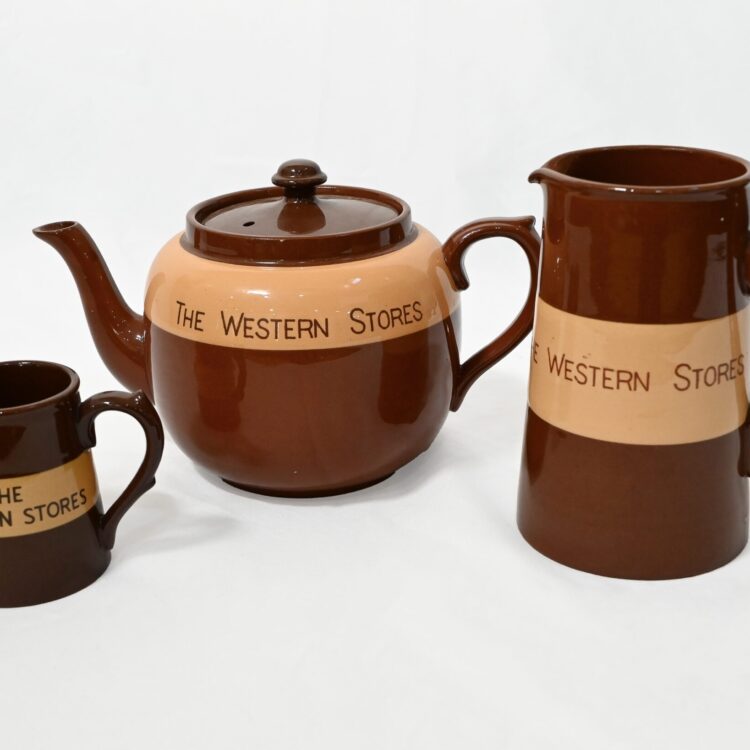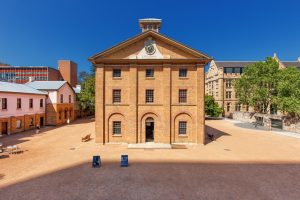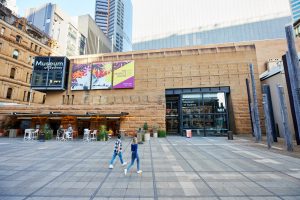We’re used to looking up in Sydney. As every new tower is raised in chrome and plate glass, and as we marvel at our glowing green giant of UTS, or our perfectly-proportioned Renzo Piano, we lift our heads high to peruse our oh-so-modern skyline. But as ground is broken for each high-rise development, archaeological remains are unearthed and hidden histories discovered, offering a chance to see what lies directly underfoot.
In Sydney we are knee deep in ruins. Our archaeological sites may well be sarcophagus-free zones but our underground discoveries offer more than muddy boots.
Parbury Ruins in the historic Millers Point district was unearthed in 2000 during the construction of a residential apartment block, revealing the footings of a 1820s two-bedroom cottage including the remains of a fireplace and veranda, and a building line perched on the very edge of the harbour. This archaeological gem is now preserved below the large residential complex and a great example of what lies beneath the modern concrete jungle.
... as ground is broken for each high-rise development, archaeological remains are unearthed and hidden histories discovered.
Home to countless historic buildings of national significance, The Rocks still sports evidence of the first settlement, though much has been lost in the throes of progress and expansion. The Big Dig archaeological site in The Rocks reveals some of Sydney’s oldest ruins, dating back to the late 1700s. Covered in concrete, the site was used for light industry and as a parking lot before excavation began in 1994, leading to the discovery of more than 30 homes and shops.
In 1900 an outbreak of bubonic plague occurred in Sydney and centred on the slum housing in The Rocks. Seen as a threat to public health, the government disinfected and fumigated the area, subsequently buying 900 homes and buildings, demolishing them and forever changing the face of the historic precinct. The footings and ruins of many of these buildings lost in the wake of a potential health disaster were those unveiled during The Big Dig excavation.
In the bustling central business district, lying directly under the Museum of Sydney on Bridge Street, are the remnants of the first Government House, built in 1788 for Governor Phillip. Indicated by metal discs laid in the forecourt paving, the building and its later architectural additions are laid out and observable through a display window, raised up from the ground. The exposed foundations and household artefacts found during the 1983 excavation are on display in the museum foyer.
The building was intended to be a temporary structure, however it remained in use until 1845 when the ‘new’ Government House, today situated alongside the Royal Botanic Gardens, was completed. The first Government House was demolished in 1846 and the ruins of this important landmark remained hidden under the developing city landscape.
The Big Dig archaeological site in The Rocks reveals some of Sydney’s oldest ruins, dating back to the late 1700s.
Housing new arrivals to the colony, including male convicts in government employ, female immigrants, including those escaping the Irish famine, the Hyde Park Barracks is home to archaeological remains of a different kind. During the 1975 conservation and restoration of the barracks, workers discovered the nests of an extensive rat population, who as judicious hoarders of every conceivable type of material, had unwittingly collected 100,000 valuable historic relics. Everyday objects and personal belongings were hidden beneath the floorboards and buried in the cracks and crevices of the building.
While archaeology digs are a once off-chance to delve into our buried pasts, the exhausted dig sites themselves are show worthy revealing both the science and bounty of excavation. Go on, here’s a chance to get knee deep in ruins with our City Archaeology trail.


